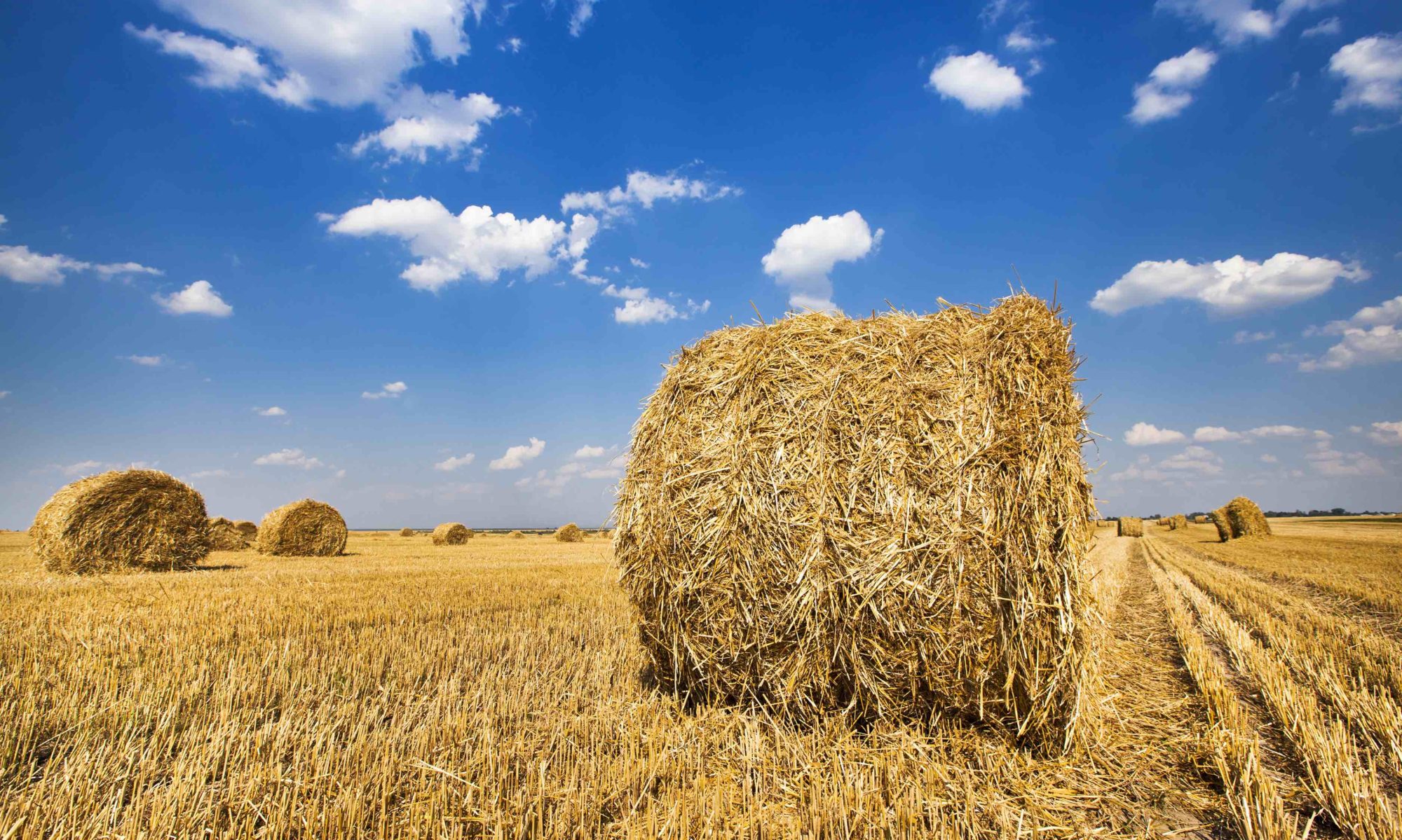Straw is a resource that is available in large amounts in the South Baltic Area. The largest proportion of that potential originates from cereal production, with winter wheat as the main crop . Poland has the largest absolut potential for straw extraction despite having the lowest share of cereal and oil crop cultivation of the four regions .
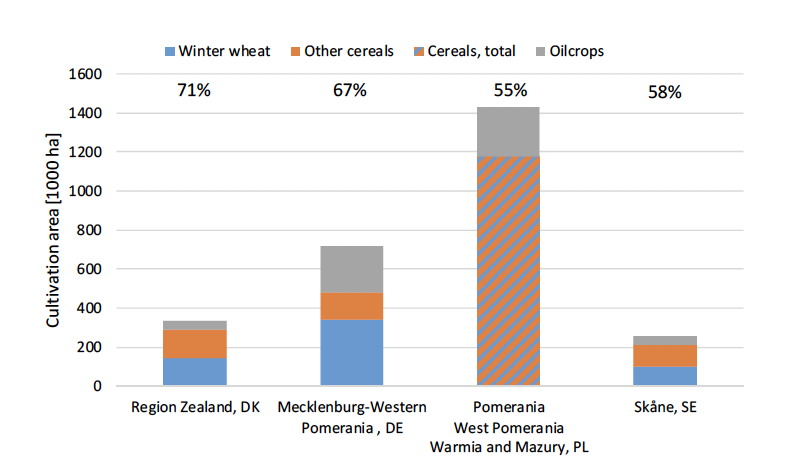 Figure 1: Cultivation area of cereals and oilcrops in the four SBA regions. Numbers above the columns refer to fraction of cereal and oilcrop cultivation area on total arable land (Ref. 1).
Figure 1: Cultivation area of cereals and oilcrops in the four SBA regions. Numbers above the columns refer to fraction of cereal and oilcrop cultivation area on total arable land (Ref. 1).
Technical straw yields per hectare differ substantially between the four SBA regions . Furthermore, the assumptions on what proportion of straw that can be extracted sustainably, between 18-71% .
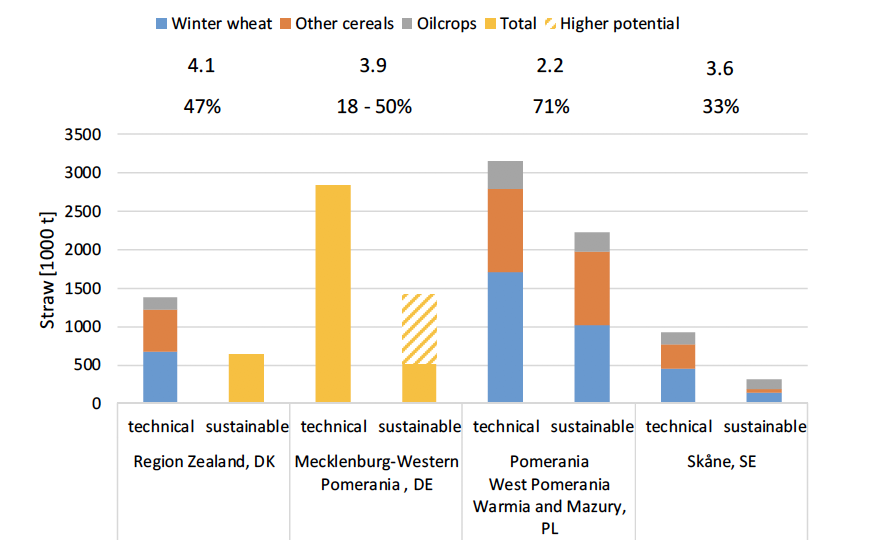
Figure 2: Straw potential (at 15% moisture content) from cereals and oilcrops in the four SBA regions. Numbers above the columns refer to amount of straw [t/ha] (at 15% moisture content) of the technical straw potential and the proportion of the sustainably recoverable straw in reference to the technical straw potential (Ref. 2).
Of the four SBA regions investigated in this study, only Region Zealand has developed a large- scale system for utilisation of straw for energy, main as fuel in large-scale combined heat and power (CPH) plants. Region Zealand uses about 35% of it´s straw potential for that purpose, while the corresponding number for Sweden is only 13% . Despite that, Denmark uses less of it´s straw potential compared to Sweden.
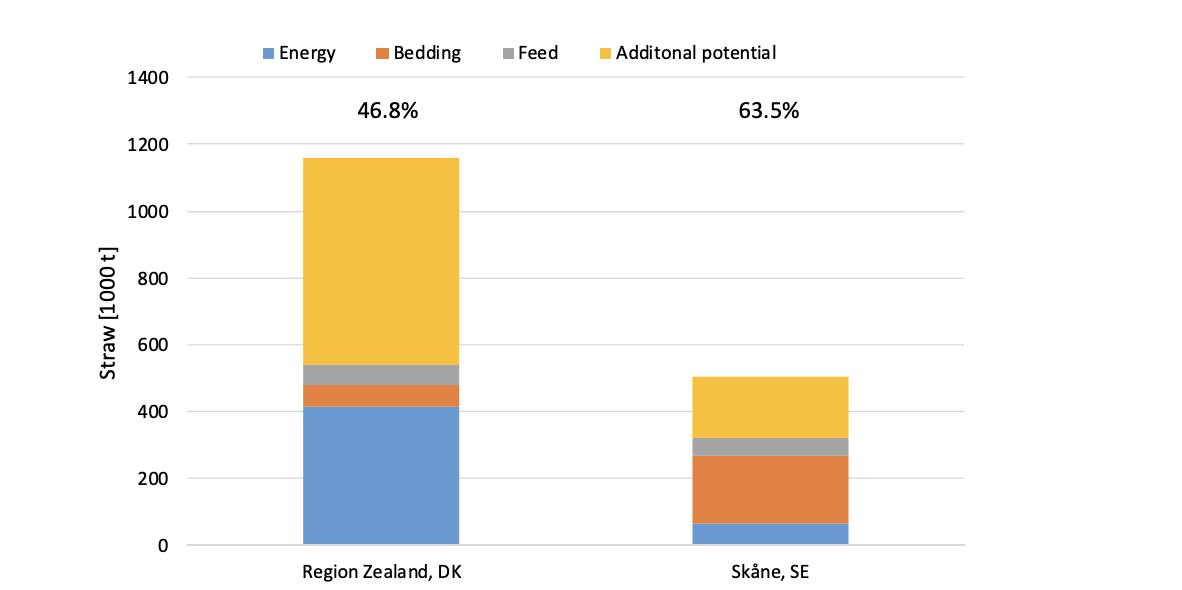
Figure 3: Straw use and potential for the scandinavian SBA regions. Numbers above the columns refer to proportion of straw used [%] (Ref. 3).
Opportunities
There are large straw potentials in all investigated SBA regions, and potential to increase the recovery and use of straw on top of the current utilisation. Besides use as solid fuel in heat and power production, straw has been suggested as feedstock for biogas production.
Utilisation of wheat straw as pulp feedstock is currently under upscaling in Sweden. More
integrated approaches suggest extraction of valuable wax components (fatty alcohols, alkanes) and paper or ethanol production from the lignocellulosic fraction86. Recently, sugars from wheat straw produced at Clariant’s Sunliquid® pre-commercial plant have been tested for production of straw- based isobutene at the Global Bioenergies’ Leuna demo plant87. A polymer based on this isobutene is Clariant’s new ingredient as a rheology modifier that influences formulation viscosity and achieves specific sensorial and texturizing properties for creams and lotions.
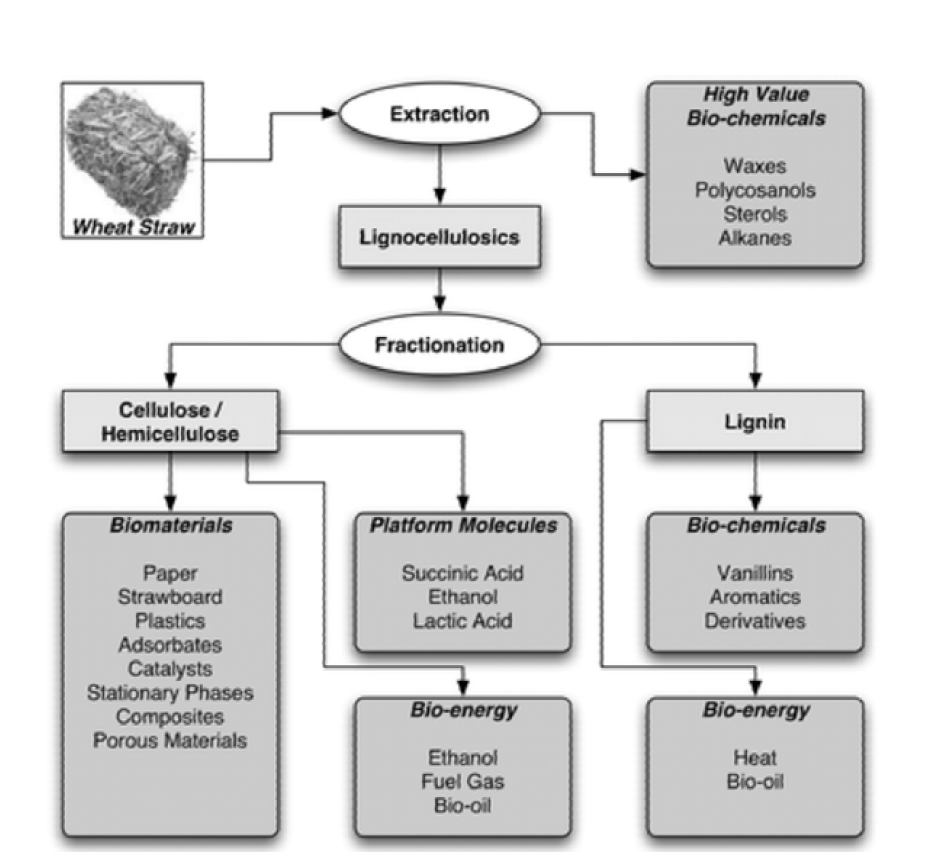
Figure 4. Wheat straw refinery and potential products (Ref. 4).
A similar concept has been suggested also for oilcrop straw, with the focus on rapeseed straw. Potential products include nanocellulose products, xylan and ligning with product recovery higher than 50% of the original biomass.
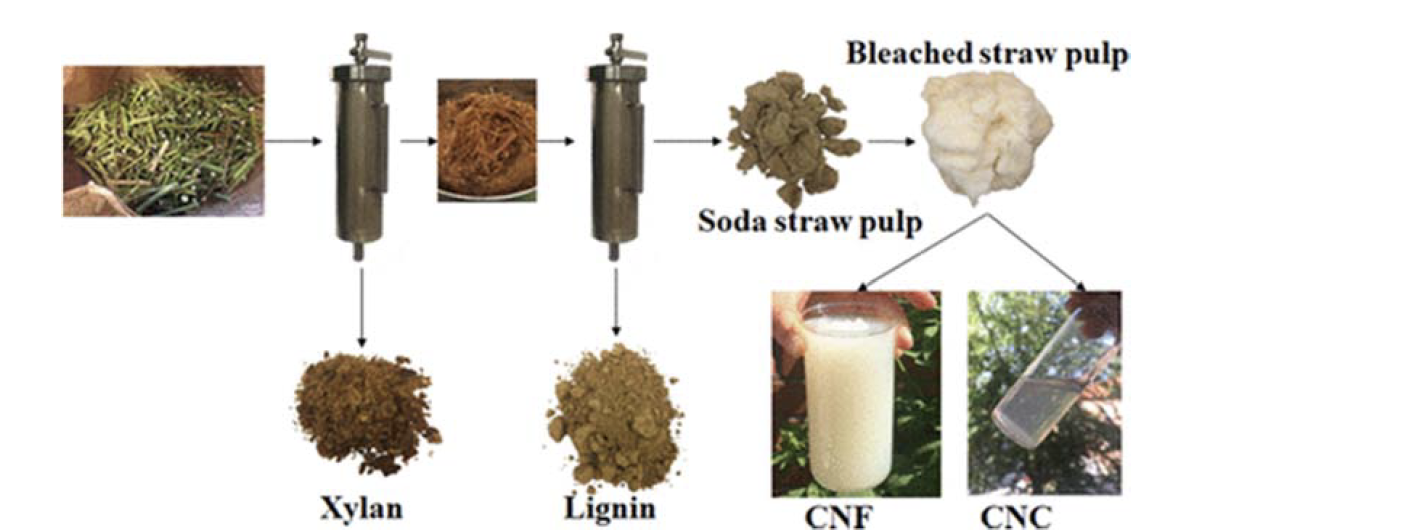
Figure 5. Rapeseed straw refinery concept (Ref. 5).
Beside biorefinery approaches, straw is used for example as the main feedstock for the production of mushroom substrate, e.g. in Poland and Netherlands, which are Europe´s leading mushroom producting countries.
Bottlenecks
Straw recovery is often limited on field level due to concers about the maintenance of soil organic carbon (SOC) levels and – indirectly – soil fertility. However, alternative cropping systems with a more prominent cultivation of intermediate crops could help main SOC levels without straw retainment and therefore increase the amount of sustainably recoverable straw.
Despite similar straw potentials in Denmark and Sweden, Denmark recovers about 12 times more straw, that is a.o. used for energy purposes. Differences between the countries include the lack of support programmes specific for straw as an energy resource and the higher competition from wood fuels in Sweden.
Recovery is not a technical issue, suitable technology to produce e.g. large straw bales for transportation, is readily available in all SBA regions investigated. Instead, it is rather an economic and logistics problem of organising the feedstock transport to the receiving industry, where a.o. straw density in the landscape plays a vital role for transportation costs. In that respect, Denmark has an advantage with an almost double as high straw density in the landscape compared to Skåne.
In conclusion, ambitious support programmes are needed to make straw available as a feedstock in larger quantaties in Skåne. Of the other SBA regions, Mecklenburg-Western Pomerania has similarily high straw densities as Sweden and Denmark, while straw yields is Poland are substantially lower.
References:
1. Prade, T., Andrzejczyk, R., M. Booker Nielsen, B. Cuypers, P. Dąbrowski, A. Ekman Nilsson, T. Kjær, J. Lund, D. Mikielewicz, M. Mittenzwei, D. Schiller, J. Wajs and M. Westkämper (2019). Biomass and innovation potential of residues, by-products and other sustainable feedstock for biobased products in four South Baltic Area regions, Interreg project Bioeconomy in the South Baltic Area: Biomass- based Innovation and Green Growth – BioBIGG. Page 39, Figure 24
2. Prade, T., Andrzejczyk, R., M. Booker Nielsen, B. Cuypers, P. Dąbrowski, A. Ekman Nilsson, T. Kjær, J. Lund, D. Mikielewicz, M. Mittenzwei, D. Schiller, J. Wajs and M. Westkämper (2019). Biomass and innovation potential of residues, by-products and other sustainable feedstock for biobased products in four South Baltic Area regions, Interreg project Bioeconomy in the South Baltic Area: Biomass- based Innovation and Green Growth – BioBIGG.Page 39, Figure 25.
3. Prade, T., Andrzejczyk, R., M. Booker Nielsen, B. Cuypers, P. Dąbrowski, A. Ekman Nilsson, T. Kjær, J. Lund, D. Mikielewicz, M. Mittenzwei, D. Schiller, J. Wajs and M. Westkämper (2019). Biomass and innovation potential of residues, by-products and other sustainable feedstock for biobased products in four South Baltic Area regions, Interreg project Bioeconomy in the South Baltic Area: Biomass- based Innovation and Green Growth – BioBIGG. Page 40, Figure 26.
4. Clark, J. H., V. Budarin, F. E. I. Deswarte, J. J. E. Hardy, F. M. Kerton, A. J. Hunt, R. Luque, D. J. Macquarrie, K. Milkowski, A. Rodriguez, O. Samuel, S. J. Tavener, R. J. White and A. J. Wilson (2006). Green chemistry and the biorefinery: a partnership for a sustainable future. Green Chemistry 8(10): 853-860.
5. Svärd, A., R. Moriana, E. Brännvall and U. Edlund (2019). Rapeseed Straw Biorefinery Process. ACS Sustainable Chemistry & Engineering 7(1): 790-801.
